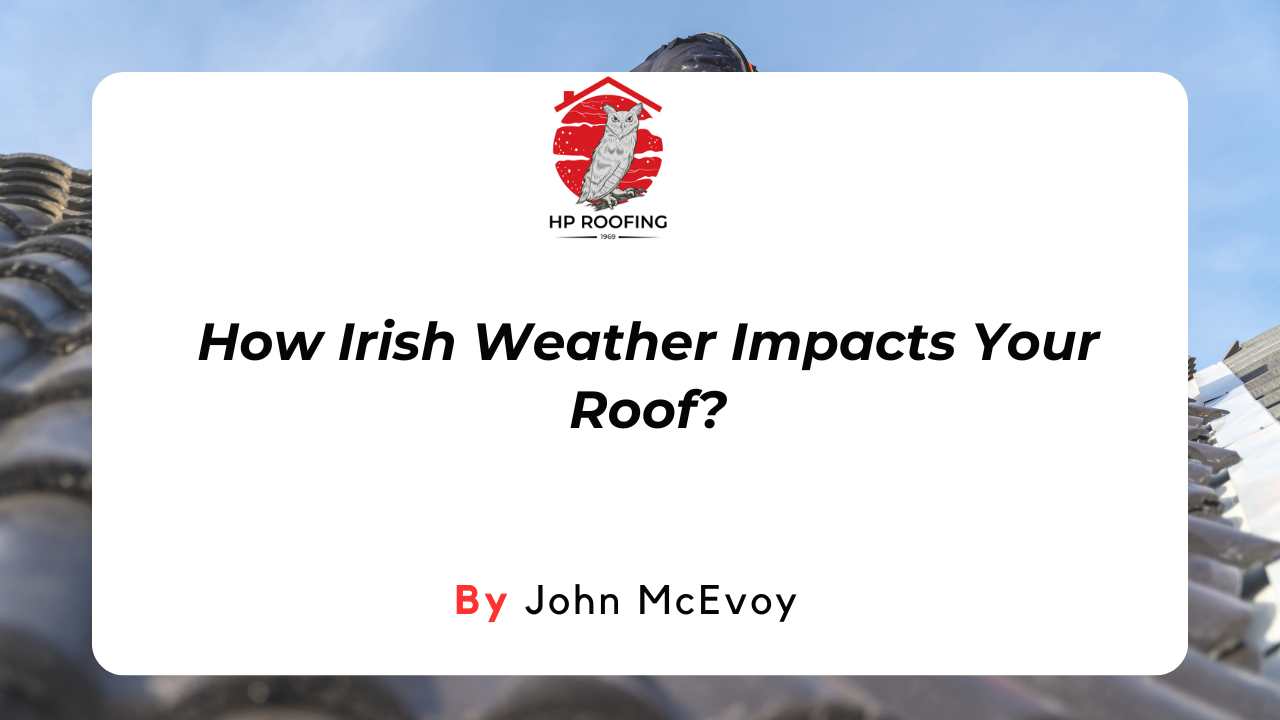Imagine waking up to a dripping ceiling and your home undergoing significant water damage - an emergency roof leak is at play. We understand the panic and uncertainty this can cause; however, quick reactions and smart decisions minimise the impact significantly.
This blog explains simple yet effective steps to tackle such emergencies efficiently, helping you halt the overwhelming spread of damage. So, dive in for a step-by-step guide to preserve your home during an emergency roof leak!
Types of Emergency Roof Leaks and Damage
Roof leaks can result in various types of damage, such as water damage, pest damage, storm damage, wind damage, neglect-related damage, and even tree damage.
Water Damage
Water damage can wreak havoc on your home if a roof leak goes unnoticed. The first sign is often a discoloured patch on the ceiling, signalling that water has infiltrated past the outer layers of your rooftop.
If left untreated, this can lead to significant structural issues and even foster the growth of harmful mould. Don't let it reach this stage; be proactive! As soon as you spot signs of water leakage from your roof, act swiftly.
Utilise containers like buckets to collect dripping water and mitigate further harm to your floors and furniture. Next, secure a tarp over the affected area on your rooftop as an immediate but temporary solution.
Calling in professionals for an assessment at this point becomes critical; they have the resources and expertise needed to properly diagnose the extent of damage and prescribe necessary repairs or replacements.
Pest Damage
Pest damage can be a major problem when it comes to emergency roof leaks. Insects and rodents are attracted to moisture, and a leaking roof provides the perfect environment for them to thrive.
Not only can pests cause structural damage by burrowing into your roof, but they can also introduce bacteria and disease into your home. It's important to address any pest issues along with fixing the leak itself.
By promptly repairing the damage and taking steps to eliminate pests, you can prevent further harm to your home and ensure a safe living environment for you and your family.
When dealing with pest damage from an emergency roof leak, it's recommended that you contact a professional pest control company who can assess the extent of the infestation and provide appropriate treatment options.
They have expertise in identifying the type of pests present and implementing effective solutions to eradicate them. It's also crucial to take preventive measures such as sealing entry points on your roof or installing mesh screens over vents to prevent future infestations.
Storm Damage
During an emergency roof leak, storm damage can quickly worsen the situation. High winds, heavy rain, and hail can cause significant harm to your roof, leading to leaks and potential structural damage.
It is crucial to assess the extent of the storm damage as soon as it is safe to do so. Secure any loose or damaged shingles, and address any areas where water may be pooling on your roof.
Acting promptly can help prevent further water infiltration and minimise interior damage to your home. Remember that in severe cases of storm damage, it may be necessary to evacuate affected areas until repairs can be made by a professional roofing company like HP Roofing.
Wind Damage
Strong winds can cause significant damage to your roof, putting your home at risk. It is crucial to address any wind damage promptly to prevent further issues. Check for loose or missing shingles, damaged flashing, and signs of lifting or curling.
These can all be indications of wind damage. If you notice any problems, contact a professional roofing company immediately for an assessment and repairs. Taking swift action will help protect your home from water leaks and other potential issues that could arise as a result of wind damage.
Damage from neglect
Neglecting your roof can lead to significant damage over time. Regular maintenance is crucial in preventing emergencies caused by neglect. Failure to address minor issues, such as loose or damaged shingles, can result in leaks and water damage inside your home.
Neglecting to clear debris from the roof can also create blockages that trap water and contribute to deterioration. Inspecting and repairing flashing and seals regularly is essential for maintaining a watertight barrier between your roof and the elements.
By addressing potential problems promptly, you can prevent costly emergency repairs down the line.
Tree Damage
If your home has trees near the roof, tree damage can be a common cause of emergency roof leaks. Strong winds or severe storms can cause branches to break off and land on your roof, resulting in damage to the shingles, gutters, or even structural components.
Additionally, if any trees are too close to your house, their branches could scrape against the roof during windy conditions, causing wear and tear over time. It is essential to regularly trim back any overhanging tree branches that pose a risk to your roof's integrity.
By maintaining proper distance between trees and your home's structure, you can significantly reduce the chances of tree-related damage during emergencies. Stay proactive by inspecting for signs of potential issues before they escalate into costly repairs or dangerous situations.
Steps to Take During an Emergency Roof Leak
Here is a step-by-step guide about how to take emergency action in case of a roof leak.
Assess the situation and identify the source of the leak
To minimise further water damage, it's crucial to assess the situation and determine where the leak is coming from on your roof. Look for any signs of water stains or dripping in your home's interior, as they can indicate the location of the leak.
Use a flashlight to inspect your attic or crawl space for any visible signs of moisture or damage. Once you've identified the source, take note of the extent of the damage and gather evidence, such as photographs or videos, for insurance purposes.
Remember to prioritise safety while assessing the situation by avoiding slippery areas and unstable surfaces. By quickly identifying and documenting the source of the leak, you'll be better prepared to take appropriate action to address it effectively.
Safely cover exposed areas with a tarp or plastic sheeting
To prevent further water damage during an emergency roof leak, it is crucial to safely cover any exposed areas with a tarp or plastic sheeting. This temporary measure will help protect your home's interior from rainwater or other elements that may enter through the leak.
By securely fastening the tarp over the affected area, you can minimise potential water infiltration and prevent additional damage until professional repairs can be made.
Document the damage for insurance purposes
To ensure that you receive the appropriate coverage from your insurance company, it's crucial to document the damage caused by the emergency roof leak. Take clear pictures or videos of all affected areas, including any visible water damage, structural issues, and personal belongings that may have been impacted.
These visual records will serve as evidence when you file a claim with your insurance provider. Make sure to capture multiple angles and close-ups of any notable damage. Don't forget to date and label each photo or video for easy reference later on.
By documenting the extent of the damage thoroughly, you increase your chances of receiving adequate compensation for repairs and replacements needed due to the roof leak.
Contact your homeowner's insurance representative
To ensure that you receive the necessary coverage for emergency roof repairs, it's crucial to contact your homeowner's insurance representative. They can provide guidance on what steps to take and advise you on the claims process.
By reaching out to them promptly, you'll be able to understand your policy's coverage and any deductibles or limitations that may apply. Don't hesitate to ask questions about how the damage will be assessed, what documentation is required, and how long it typically takes for claims to be processed.
Your insurance representative is there to help you navigate this challenging situation and ensure that you receive the support you need.
Consider contacting a professional roofing company
If you're dealing with an emergency roof leak, it's crucial to consider reaching out to a professional roofing company. They have the expertise and experience to assess the damage properly and recommend appropriate repairs.
A professional roofing contractor will be able to identify the source of the leak, provide temporary solutions like tarping or sealing exposed areas, and offer long-term repair options.
Contacting a professional ensures that your roof is repaired correctly, minimising further damage and giving you peace of mind knowing that your home is protected from potential leaks in the future.
Temporary Emergency Repairs
To temporarily fix a leaking roof, cover the exposed areas with a tarp or plastic sheeting, clear gutters and downspouts to prevent further water damage, and remove any standing water and debris.
Placing a temporary patch or sealant to stop the leak
To temporarily stop the leak during an emergency roof situation, it's crucial to apply a temporary patch or sealant. This helps prevent further water damage to your home's interior.
By identifying the source of the leak and assessing its severity, you can determine the best approach for patching up the affected area. A tarp or plastic sheeting can be used to cover exposed areas and provide a barrier against water infiltration.
Remember to document this temporary repair for insurance purposes and contact a professional roofing company as soon as possible for a more permanent solution.
Taking swift action by placing a temporary patch or sealant can make a significant difference in minimising water damage while waiting for professional repairs. Keep in mind that using buckets or containers to collect any leaking water is also essential in preventing additional harm to your home's interior until proper repairs are made.
Clearing gutters and downspouts
We must regularly clear our gutters and downspouts to prevent potential roof leaks and water damage. Clogged gutters can cause water to overflow onto the roof, leading to the deterioration of roofing materials and eventually resulting in leaks.
By removing debris such as leaves, twigs, and other obstructions from our gutters and downspouts, we ensure that rainwater can flow freely away from the roof instead of accumulating and causing damage.
This simple maintenance task helps to protect our roofs from unnecessary wear and tear, preventing emergency situations in the future. Maintaining clean gutters and downspouts is an important step in preserving the integrity of our roofs and avoiding costly repairs down the line.
Removing excess water and debris
To prevent further damage after an emergency roof leak, it's crucial to remove any excess water and debris. Use buckets or containers to collect the water and prevent it from spreading inside your home.
Clearing gutters and downspouts will help ensure proper drainage and prevent standing water on your roof. Remove any fallen branches or other debris that may have accumulated on your roof during the leak.
By taking these steps, you can minimise the risk of additional damage and keep your home safe and dry.
Preventive Measures
Regular roof maintenance, clearing debris from the roof, and inspecting and repairing flashing and seals are essential to prevent emergency roof leaks. Don't wait until it's too late - take proactive steps now to protect your home.
Regular roof maintenance
Regular roof maintenance is crucial in preventing emergency roof leaks and damage. As responsible homeowners, we should make it a habit to regularly inspect our roofs for any signs of wear and tear.
By clearing debris from the roof and ensuring that gutters and downspouts are clear, we can prevent water buildup and potential leaks. It is also important to inspect and repair flashing and seals to ensure they are watertight.
Addressing any potential issues before they become emergencies can save us time, money, and stress in the long run. Professional roof inspections and maintenance plans can provide an extra layer of protection for our roofs, helping us identify any hidden problems early on.
Clearing debris from the roof
Regularly clearing debris from your roof is an essential step in preventing emergencies. Fallen leaves, branches, and other debris can block gutters and drains, leading to water buildup during rainstorms.
This standing water can cause damage to your roof, leading to leaks and potential structural issues. By clearing debris from your roof on a regular basis, you can ensure proper drainage and reduce the risk of emergency roof leaks.
Remember that prevention is key when it comes to maintaining a healthy roof for your home.
Inspecting and repairing flashing and seals
Inspecting and repairing flashing and seals is crucial to ensure your roof remains watertight and protected from leaks. Over time, the flashing and seals on your roof can deteriorate or become damaged, leading to potential water infiltration.
By regularly inspecting these areas, you can identify any issues early on and address them before they escalate into emergencies. Look for signs of rust, cracks, or gaps in the flashing around vents, chimneys, and skylights.
Additionally, check the seals along the edges of your roof for any wear or damage. If you notice any problems, it's important to repair or replace the flashing and seals promptly to prevent further water damage.
Addressing any potential issues before they become emergencies
Regular roof maintenance is essential in preventing potential issues from turning into emergencies. By inspecting and repairing flashing, seals, and any other weak spots on your roof, you can identify and address minor problems before they escalate.
Additionally, clearing debris that may accumulate on your roof will help prevent water pooling and damage to your roofing materials. Taking these proactive steps can save you from costly repairs down the line and ensure the longevity of your roof.
Don't wait for an emergency - stay ahead of potential issues by implementing regular roof inspections and maintenance plans.
Consider professional roof inspections and maintenance plans
Professional roof inspections and maintenance plans are highly recommended to homeowners. These services can help identify potential issues before they turn into emergencies. By having your roof regularly inspected by a professional, you can stay ahead of any damage or leaks that may occur.
Maintenance plans also include routine cleaning and clearing of debris from the roof, ensuring that it remains in top condition. This proactive approach can save you time and money in the long run by preventing major repairs or emergency situations.
So, consider investing in professional roof inspections and maintenance plans to protect your home and extend the lifespan of your roof.
Regular inspections by professionals help prevent emergencies by identifying potential issues early on.
Conclusion
In conclusion, taking immediate action during an emergency roof leak is crucial to minimise potential water damage and prevent further issues. By assessing the situation, safely covering exposed areas, documenting the damage, and contacting a professional roofing company or your insurance representative, you can swiftly address the issue and protect your home.
Remember to also consider preventive measures through regular roof maintenance and inspections to avoid future emergencies. So, don’t wait! Contact HP Roofing today to schedule an inspection and ensure your roof is in top condition.
















